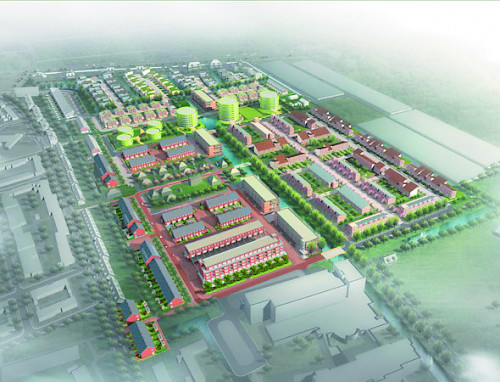Greenhouse heat for a residential district
29 Jun 2005
In Naaldwijk, work is being done on an innovative project together with housing corporation Vestia Westland and the Municipality of Westland. The Hoogeland residential area may look like any other but it uses solar heat generated by Prominent Groeneweg II’s semi-closed greenhouse and then stored in an underground energy storage facility.
In Naaldwijk, work is being done on an innovative project together with housing corporation Vestia Westland and the Municipality of Westland. The Hoogeland residential area may look like any other but it uses solar heat generated by Prominent Groeneweg II’s semi-closed greenhouse and then stored in an underground energy storage facility.
The tomato greenhouse acts like a large solar collector. Surplus solar heat is captured and stored, and then returned to the greenhouse in the winter. But Prominent’s Groeneweg II greenhouse produces so much solar heat that it can also supply a couple hundred homes with energy. This observation led to a special partnership.
Underground energy storage
The surplus solar heat generated in the greenhouse is stored in an aquifer located beneath this Naaldwijk residential district. During the winter, this heated groundwater is pumped up to heat the homes and other buildings in the district. After releasing its heat, the groundwater is stored underground and used in the summer to decrease the temperature of both the greenhouse and the homes by a few degrees. To realise this exchange of warm and cold water, six aquifers were constructed and a 1200-metre system of pipes was laid between the greenhouse and the residential district. By using solar heat generated in the greenhouse, the Groeneweg Innovation Centre is contributing to a better environment while keeping down local residents’ energy costs.
Activate the shopper to consume tomatoes at unexpected moments
With breakfast, for example. Curious about the positive effects?

